Animation Credits Demystified
The movie ends; the crowd wants out as if tear gas was released. Nevertheless, there are a few lingerers sitting through the credits keeping extreme focus on the screen, not willing to risk looking down while grasping for a piece of popcorn. How do they still have popcorn? Regardless, those last few keep a profound stare at tiny names racing down the screen. Perhaps the majority who glimpse at the credits might wonder how those names became crew members on an animated film. Some envision the crew thoroughly savor their employment. What in the name of all that’s holy can be cooler than working on a feature?
With feature animation, one might perceive employees in big studios live and breathe animation. The common perception is that working for a big name studio is the ultimate dream job. After all, animation is fun to watch so wouldn’t it be logical to assume it’s the result of playful creation? The outsider’s common perception of the path towards working in the industry is somewhat enjoyable. The reality is, many leave their families to get work far from home or uproot them for a show that gets canceled. Others might have been blessed to avoid that, but the truth is a life of employment dubiety.
We will hear from animation veterans whose names appeared on countless credit lists and worked throughout a multitude of changes in the business. They’re unifying factor includes pipeline experience in traditional 2D animation as well as 3D and worked during times when most feature animation was produced in California. Each person has worked for a variety of animation studios including special effects houses for live action and they all have differing roles in the production pipeline. We will hear their personal feelings and interest regarding animation, how they formed their path towards working in the industry and if they really do live and breathe animation.
Michael Baum
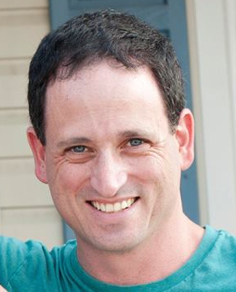
Michael Baum, Production Management, considers animation an accidental career. “I am currently not working having just been part of a massive (hopefully temporary) downsizing at DisneyToon Studios. Prior to that I’ve worked at Disney Feature Animation, Illumination (Despicable Me) and the now defunct Imagi (Astro Boy).” Production management in feature animation requires detailed planning, a careful dispersion of work and a thorough understanding of the production pipeline. Each department has at least one production manager who is the heart of all communication.
Although Baum watched animation throughout his childhood, he wasn’t a fanatic. “I’ve always loved animation growing up, but not at the level as most of the people who work in animation. There is a level of passion that a lot of my colleagues have that I just don’t. There’s a reverence for the history and legends of animation that comes with the passion that a lot of artists have who have always dreamt of a career in animation.”
It’s common for people who didn’t follow animation before working in the industry to develop an appreciation for it. Most people naturally develop an eye for the art as well as an educated opinion about animated features. “I had fun in it, but I still never became as enthusiastic as my colleagues. I never went beyond what I was working on. To me it was a fun job, but not a passion. The summer I got married, I did a lot of temp work since I needed the flexibility to travel to Indiana (the location of my wedding). The bulk of my temping was at Disney Feature Animation. When I returned from my honeymoon, they had a full-time offer for me. So I took it.”
Animation is hard for some to watch when not at work. It reminds most people of their job and the shots they are trying to get out. “I did more so before working in animation. The production management side of animation can be very frustrating on many different levels. It wasn’t necessarily difficult, but the mentality behind the decisions was often suspect, and over time the process took the joy out of the product.”
Although Baum feels this way, he admits to spending money on tickets for animated features in the theater. “Of course it helps that I have two young daughters, but I still enjoy seeing a well done animated feature in the theater.”
Robh Ruppel
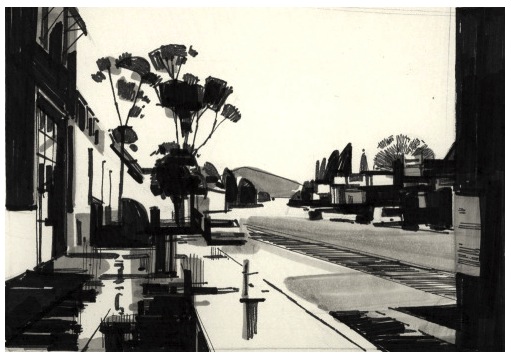
Robh Ruppel, Art Director, Concept Work, Production Design, Naughty Dog. Ruppel’s history of employment includes Disney Feature, Disney TV, DreamWorks, Paramount and Blue Sky Studios. Ruppel’s personal work
Ruppel recalls growing up as an animation follower, “Ever since I was a wee lad, I was making cut out and clay films in grade school. I admired Terry Guilliam cut out animation, Paul Driessen, Will Vinton, classic Disney, Pixar, Bill Plympton, Harryhausen.”
Inspiration to work towards a career path can come from many places. “The love of drawing and the book The Illusion of Life by Frank and Ollie.”
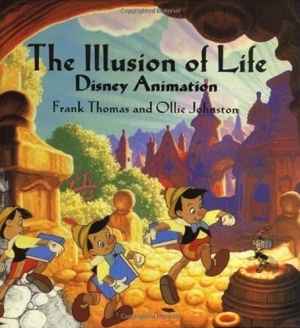
Ruppel’s personal work is his own graphic style that is animation inspired. He frequently pays to see animation in the theater and most likely stays to watch the names in the credits. We are unclear about his feelings on popcorn.
Olun Riley
Olun Riley, Lighting and Compositing at Disney Animation, recent winner of the 13th Annual VES Award for Outstanding Created Environment In An Animated Feature Motion Picture for Big Hero 6: Into The Portal
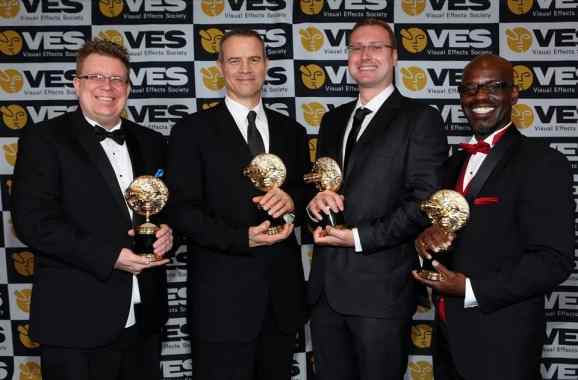
Riley’s past employment included Sony Pictures Imageworks, Cinesite, DreamWorks Animation and Fox Animation Studios. Growing up, Riley particularly admired, “Chuck Jones, Frank & Ollie, and Milt Kahl.” His path leading to his career in animation, “Reading comics as a kid, I got into drawing comic books and then wanted to make them come to life when I saw Lady and The Tramp. Seeing drawings come to life astounded me.” Riley frequents the theater for animated features, “I love to see what others are working on.”
Michael Levine
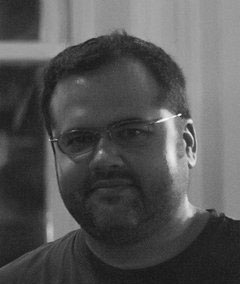
Michael Levine, Creature FX TD; Muscle, Skin, Hair and Cloth Simulation, Inage Engine Design. Previous employment includes Framestore, Mind Over Eye, Digital Domain, Blue Sky Studios, Sony Pictures Imageworks, Disney Feature Animation, Rising Sun Pictures, Asylum Visual Effects, ImageMovers Digital, Zoic Studios, Photon VFX and Industrial Light + Magic.
Levine has always been an animation enthusiast and knew at a young age he wanted to work in animation, “seems like a silly dream now.”
Some people relate to a specific style of an animator. Levine didn’t have a particular animator he followed, “Animators were mostly kept anonymous except for the rare Disney artist that got into a making of book.”
Everyone has a different route they take getting to their job in feature animation. Levine, “I went to CalArts, it was a pretty direct path at the time.” Levine always watched animation in his free time, however at this point he says, “Not anymore.”
Keeping in mind that for some, watching animation outside work can be stressful, the question is do people employed in animation pay money to see an animated feature in the theater? Levine, “Very rarely. It would be more rare to pay to see something I did work on. Most movies are a commercial product. Most animated movies are formulaic garbage made for children, mass consumption and toy sales. So I’ll pay to see a Studio Ghibli movie in a theater, but maybe that’s about it.”
Jasmine Katatikarn

Jasmine Katatikarn, Lighting Technical Director, Blue Sky Studios. Like many people in the industry, Katatikarn wasn’t necessarily a fanatic. “Yes and no. When I was younger, I always appreciated the color palettes that I saw when watching a movie, but never registered it as being anything I should take note of. As an adult, I still enjoy animations, but I see it very differently. I see all the elements and hard work that go into animations and appreciate it even more. After working in the industry, you gain an appreciation for the work and quality that goes into each piece of work. It’s very inspiring.” Jasmine recalls her childhood employment intentions, “as a child, I thought I would be an architect or a doctor. I am very happy with my current choice.”
Katatikarn carved her way towards animation through studying and working in various fields. “After getting a BA in Economics and Art History I found that I didn’t have a passion for finance. I decided to find something that I did feel passionately about. This search eventually led me to animation. I always practiced fine arts and had an interest in computers. I combined these interests and created a portfolio. After working as a junior packaging designer for Godiva Chocolatier, I attended grad school and received a Masters of Science in Digital Imaging and Design. From there I worked first in medical 3d visualization, then to commercial/vfx and finally to feature animated films. I really enjoy being a lighter because it combines my passion for creating something visually appealing to something technical as well.”
Jasmine co-founded an online school with Mike Tanzillo, dedicated to the more technical aspects of animation called TDU (www.td-u.com).
Katatikarn and Tanzillo are in the process of co-writing a lighting book available October 30, 2015 www.lightingforanimation.com
Thomas Baker

Thomas Baker, 3D Stereo Camera for Depth and Compositing for both Left and Right Eye, Walt Disney Animation Studios.
Most people with Disney Feature Animation on their resume may not have more than 5 – 10 years listed. “I’ve been with Disney for two decades now. Previously I worked freelance and for the largest animation camera studio in Hollywood called Nick Vasu Inc.”
Baker has also worked as a CGI Environment Construction, CGI Camera Layout/Animatic, 2D/3D Scene Planning which created Camera and Composited Images for Final Color, 2D Scene Planning: Created Camera Motion as well as Composite Images for Color, Motion Control Camera for Animation, Visual Effects, Title Photography, Animation Camera computations for Camera Motion. Baker recollects himself as an animation follower, “I am an animation enthusiast and that goes all the way back to my first viewing probably on television. I was enamored with Felix the Cat, Gumby, Peanuts Gang/Charlie Brown, and Bugs Bunny.”
Baker goes on to explain how he envisioned himself in a career when he was growing up. “When I was young I never dreamed of working in the animation field. I had many many many idea’s of what I would do for a living from professional soccer player, street cleaner, environmental lawyer, firefighter, farmer, sound recording engineer to even drive an earth scrapper. I loved big construction trucks and trains.”
Baker’s enthusiasm for animation grew even more once he was in the industry. “I was an apprentice in an animation camera studio. I started off being trained in animation mostly Charlie Brown but after a few short weeks I was also being trained to photograph multi-pass visual effects, main titles, end credits and advertisement logo’s for TV stations. Charlie Brown specials were our bread and butter work, it kept me busy during slow times with effects photography.” Baker’s path to the animation industry sounds as if he was willing to take a risk along the way and worked harder than he realized he was able to. “As a summer intern at a law firm, I quit because it was criminal law and I was interested in environmental law. I was then interested in sound design and mastering when I learned of an internship in animation camera. That sounded really cool, but I certainly had no idea what that meant. I just knew I loved animation and I loved shooting pictures with my various cameras. Turned out it was a 5-year program that taxed me emotionally and physically the first two years, most people in my position and maturity would have quit. Nothing like photographing a lengthy job at night, only to then deliver to a laboratory for film processing that same night, then to be transferred to video in the morning, then on the air for a network television station that evening. Can’t make one mistake with that kind of schedule.”
Baker’s answer in regards to watching animation in his free time is something most people, even who work in animation, think or know about. “I actually do enjoy watching all kinds of animation when not at work. I like 2D and CG, I prefer to watch features in 3D stereo on a large screen in a theatre, but I also enjoy the simplest of animation on television. I absolutely pay for animation in a theatre if I didn’t work on it if it was created/produced in the United States. If the film was developed/produced in another country then yes, I will support that work as well. Some very good animation comes from ALL over the world. I will not pay for a movie that was started in the U.S. But outsourced to save money in labor, but then marketed back into the United Sates as if it was created/produced here. I will only watch this for free as the distributors do not reduce my ticket price to the level of the pay scale they outsourced the work to. I don’t feel it’s a level playing field to charge me the current U.S. rates for a ticket, but doing the work in a much cheaper market.”
Mark Anthony Austin
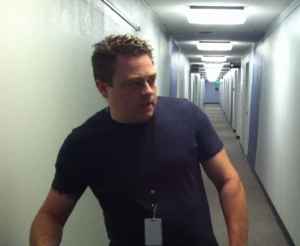
Mark Anthony Austin, Character Animator, more recently a generalist encompassing Cinematography at MPC (The Moving Picture Company), Santa Monica. Austin’s previous employment includes Wyatt Cattaneo Animation Studios, Industrial Light and Magic, Disney Feature Animation, Sony Pictures and The Third Floor Inc.
Animation captured Austin in a sophisticated way at a young age. “Since childhood I’ve always been fascinated by the illusion of life, be it animation, puppetry etc.”
Austin’s open mind during his studies was beneficial in his path to work in animation. “I completed a general art diploma where you get to try out a spectrum of arts, the idea was to find out your calling. I loved the course, but couldn’t decide what to do. I picked animation even though the course had not covered this topic. My teacher rolled her eyes at my answer. It was my love of watching animation that made me choose it.”
When Austin is not at work he enjoys watching animation. “… though after 25 years in the business I have other things I’d rather do in my free time.”
As for working on personal animation, “No. I refuse to bring work home with me in that regard. Nowadays I have grown to be more jaded towards animation. My passion has switched to a love of cinematography more than animation itself. I read books on cinematography.” Does Austin pay money to see an animated feature? “Of course.”
Lopsie Schwartz

Lopsie Schwartz, Look Development and Art Direction, previous employment includes Disney Feature Animation, and Dr. D, Australia with George Miller on Happy Feet 2.
Schwartz has always been a fan of animation; “I have always enjoyed animation, including anime. I have always loved the Disney Animations. When I was about 8 years old I saw my first anime. At the time I had only seen Disney, WB cartoons and Hanna Barbera, I was stunned at the difference in style between the western and eastern animation, it was one of my first inspirations to really draw obsessively. I never thought of animation as a career. I was going to be a scientist and drawing was just a hobby.”
Was it Schwartz’s dream to work in animation? “No, but since I was a teenager, I did dream to work in movies in some capacity. I hoped to find some type of job that would let me draw for movies yet my mind never connected to animation as a career. I think that was in part from the lack of awareness both from my family and me. I didn’t even realize that Walt Disney was an animator when I was young and didn’t even know the word, let alone the career.”
Schwartz didn’t plan her path to animation, but it fell into place. “I came from a VFX background. I got there because I liked to draw and I liked movies, and I was computer savvy. A lot of the same skill set is used in Animation.”
Does Schwartz pay to see animation in the theater? “OF COURSE!”
Carol Hayden
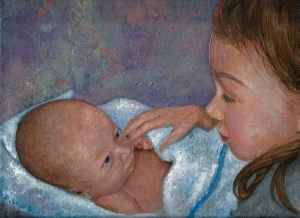
Carol Hayden, previously a Viewpainter for ILM, Look Development Texture Painter at Disney Feature Animation, and Materials at Blue Sky Studios.
A texture artist’s job is to create the actual textures of every asset in the scene. “While at Disney, I worked in Look Development and was usually teamed up with a technical director creating the look of a character, environments, and props. I was painting textures, grooming fur, hair, feathers, and/or applying materials. In the beginning of productions sometimes I’d work in visual development with the art directors to envision the look of a character or prop. I’ve also worked in lighting. When I first started out at HD/CG New York, I was exposed to modeling and animation. I was able to do both, but I was stronger at texturing and painting backgrounds. The knowledge of modeling and animation made me a better texture painter. For example, if it were possible I would meet with the modeler to discuss what needed to be modeled or painted as a displacement map. I would also inquire from the animator details like where the bends would be for something such as a knee or the directional movement of the facial animation so the textures would properly expand and contract with the animation. It was also important to check the storyboards and see if there were close ups, where to spend the extra detail and map resolution. The Runt, for example, in the movie Chicken Little was pretty much always close-up. He was often the entire background!”
Hayden started her studies in computer graphics during an embryonic stage. Women doing technical work were few and far between not only in the industry but also studying it. “I graduated from Pratt Institute and majored in Fine Arts with Computer Graphics. I had an internship at Shima Seiki USA learning a High Definition Paintbox. After graduation, I was hired at HD/CG New York as their 2D artist doing background paintings and texturing long before 3D paint systems. We created the first realistic dinosaur short in High Definition called The Lost Animals, Siggraph 1991. We did a few more animation short films of dinosaurs that were shown in the IMAX theaters at museums. I became pretty specialized in painting dinosaurs so when HD/CG New York relocated back to Japan, I moved cross-country to work at ILM. I painted many props and creatures at ILM, including a flying cow in Twister and a Dewback for the new additions of Stars Wars New Hope. I also painted and groomed a few Dalmatian puppies, research for this production was a perk and so adorable. After painting the T-Rex on Jurassic Park, The Lost World I went to Disney to work on more dinosaurs. I was not limited to dinosaurs but animals seem to be my specialty. I learned and grew a lot at Disney and ILM working with amazing artists and technical professionals as well as taking art classes at the studio between productions or in the evenings. Going back to drawing, painting and sculpting with your colleagues was a great experience. I hope they still do this. After Chicken Little I left California to come back New York, where I got married and worked at Blue Sky Studios until my son Liam was born.”
Hayden’s response about paying to see an animated feature in the theater is certainly uncommon and something most people never have to consider. “Yes, of course I would pay to see an animated feature with my kids, but I usually don’t go to the movies at all. Oddly, this was my field of employment, I’m deaf in one ear and hard of hearing in the other so the experience of movie theaters is not something I can fully appreciate. I wish more movie theaters had resources for the hearing impaired like rear window captions. On a happy note, I felt useful helping my animator friends when they had difficulty on a lip sync shot, I was a good lip reader. I was also told years after my first hire that my boss believed due to my lack of hearing my eyes saw more than the average person. I thought this was an interesting point of view. I do think it’s true that your other senses make up for a loss, but never realized it would be applied to my work or enhance my talent. Maybe having a hearing handicap has a positive side.”
Charles Colladay
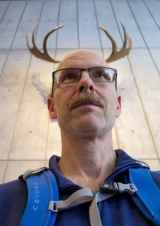
Charles Colladay, Look Development Artist, Walt Disney Animation Studios (20 years). Previously worked at Buena Vista Visual Effects, R GreenBerg & Associates/LA, Boss Films and WPBT Channel 2 as a Digital Artist.
A look development artist develops the look and feel of the scene, no pressure there…they will come up with look proposals based on the scene and the story as a whole.
Colladay has always been an animation enthusiast. “I was about 4 years old and there was an episode of Heckle and Jeckle, The Power of Thought. When they woke up in bed and realized they, as cartoon characters, had the power to bring into being whatever they could think of. Imagine, just being able to think of something and it happens! Way cool. They could make themselves into dumbbells or telephones and then back to black birds again. The original shape shifters.
Yeah, they had bad fake English accents, but they were creative. It was not much of a leap to want to be the people who created the characters who could then recreate themselves. Very Meta.”
It was Colladay’s dream to work in animation, “… but then it seemed so out of reach. I got a degree in illustration from Pratt Institute, which really helped. I kind of snuck into animation through the back door, creating shiny flying logos on a Cubicomp.
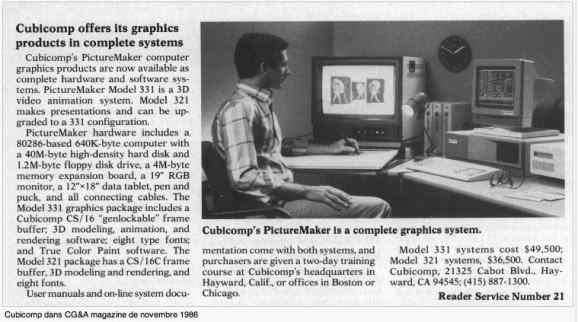
That was a bear of a machine with glacial rendering abilities. One thing lead to another, freelance became full time and lead to visual effects. The technology fascinated me. Figuring out how the magic was done and how to do it became somewhat of an obsession. If you do your VFX job properly no one knows you’re doing it. After a lot of that, I thought it would be fun to treat the visuals as a point of departure. Eventually I got back in touch with my inner 4 year old and started making cartoons.”
Does Colladay still watch animation in his free time? “Sometimes it feels too much like work. I spend a lot of time in a dark room. I’d rather be on my bike. The animation has to be good; even then I have to watch it twice. The first round I spend looking at stuff which distracts me. The second time I pay attention to the story. Mostly I watch live action when I choose to watch something.”
Is Colladay doing his own animation during his free time? “Nope. Too much of a good thing ain’t that good. I need to do things with my hands if I have any energy left after driving home.”
Conclusion
A personal perspective is just that, exclusive. For some, working in animation is a dream come reality and for others it is a job, both require extreme endurance, an extensive labor of love and an esoteric amount of tenacity…but what isn’t? The difference with animation is it makes the general public happy and the illusion that working on animated movies is fun. It’s a medium the masses covering the entire world incorporate within their society. It would be like eating at an excellent restaurant assuming the waitress has a fun job.
The Grateful Dead said it best, “A peaceful place, or so it looks from space.”
What do you think? Leave a comment.
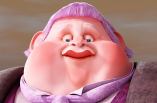










Really interesting article! I didn’t realize they were so many jobs in animation other than animators. What a fun read!
Very insightful article which gives a well-deserved credit to those who work for our pleasure and do not always get recognized for it by general audiences. Animation is such a fascinating world and a hard job to do. Well done to them!
Thanks you for the interviews Lauren.
Some of the greatest animation work comes from all over the word.
Just as Thomas Baker said. 🙂
Refreshing post.
Mulan 98 is not quite the story of self realization and female empowerment that the commercial and internet reviewers are calling it. With that being said, it is one of the best Disney productions. Ruppel and co did a good job.
I really enjoyed your article – I think I’ll look at the credits more closely next time I’m at the movies!
Heckle and Jeckle brings back the moments in my life as a child.
Lovely cartons of old days
Nice! I’m thinking to place an order on Lighting for Animation.
I love this entry to the animation category!
Ruppel has a nice credits list.
Animation is an under-appreciated art form.
I agree. Animation has so much potential as an art form, so much can be done with such a versatile medium, yet too often, at least in this country, it used to peddle formulaic drivel.
And, fantastic article! I always enjoyed perusing the credits, and it is great to get a little clarification now and then.
Animation is an extremely difficult profession to break into. I praise all of them for their success.
Most creative industries are hard to get employment.
Really inspiring to read about these artists.
So good and inspiring to know about all this, through interviews! Really a good article.
As as production artist myself, I thought this was a great article, it should be turned into a 30 minute documentary. It is really exhausting having to explain to people what it is that I do as a freelancer, a good documentary to delve further into knowing what goes on behind the scenes is the documentary “Life After Pi.”
Have always thought those involved in animation had to be really dedicated to doing it, especially early on (for me, back in the 1960s).Not many outlets to put your skills on display. I think with the advances in technology, like computers,tablets and software, it will be really cool to see lots of independently produced animation distributed online.
So glad you wrote this article and brought it to people’s attention. I’m one of the few who doesn’t leave the theater until the credits are over. It’s so important that we give credit to the amazingly talented folks who are the foundation and backbone to the works we love.